Have you ever been mesmerized by those images of the colorful houses that Copenhagen Tourism keeps flashing to attract tourists? Well, then you would be surprised that India has its own set of such houses with a little pastel shade. Sidhpur is a little town in Gujarat and surprisingly, the travel-crazy Gujaratis also seemed unaware of this quintessential gem.
The town has its history dating back to the ‘Puranas’ where the town has been mentioned as Shristhal. Parshurama is supposed to have performed the last rituals after his mother’s death here. Thus, Siddhpur has also acquired the title of ‘Kashi of the West’. It flourished during the rule of the Solanki Kings of Gujarat who also made it a capital of the state. It is named after the famous king of Gujarat, Siddhraj Jaisinh.
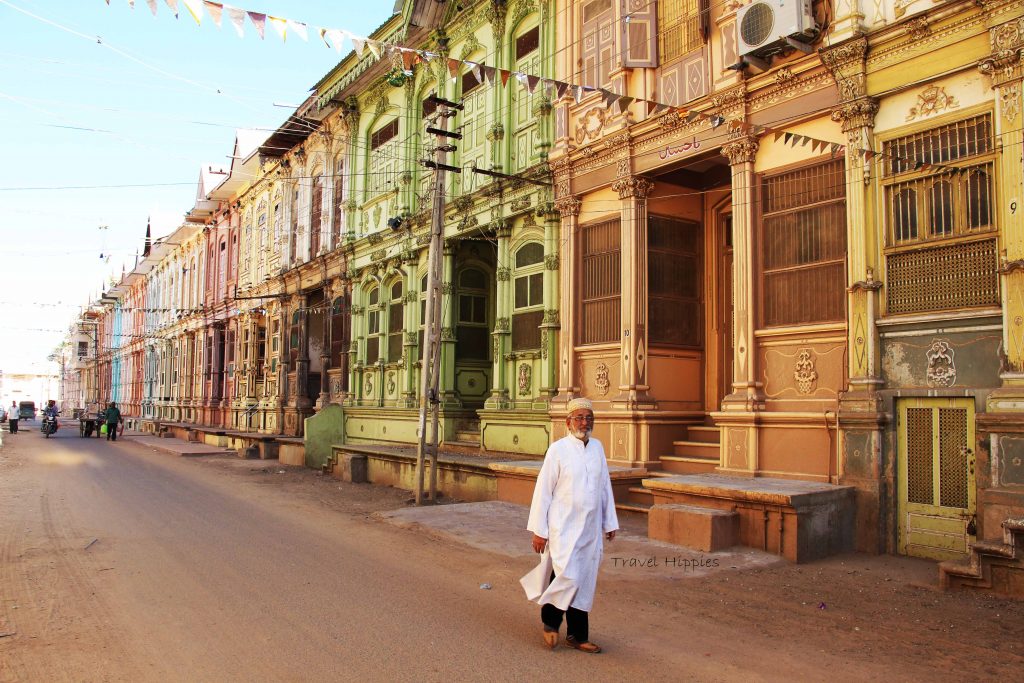
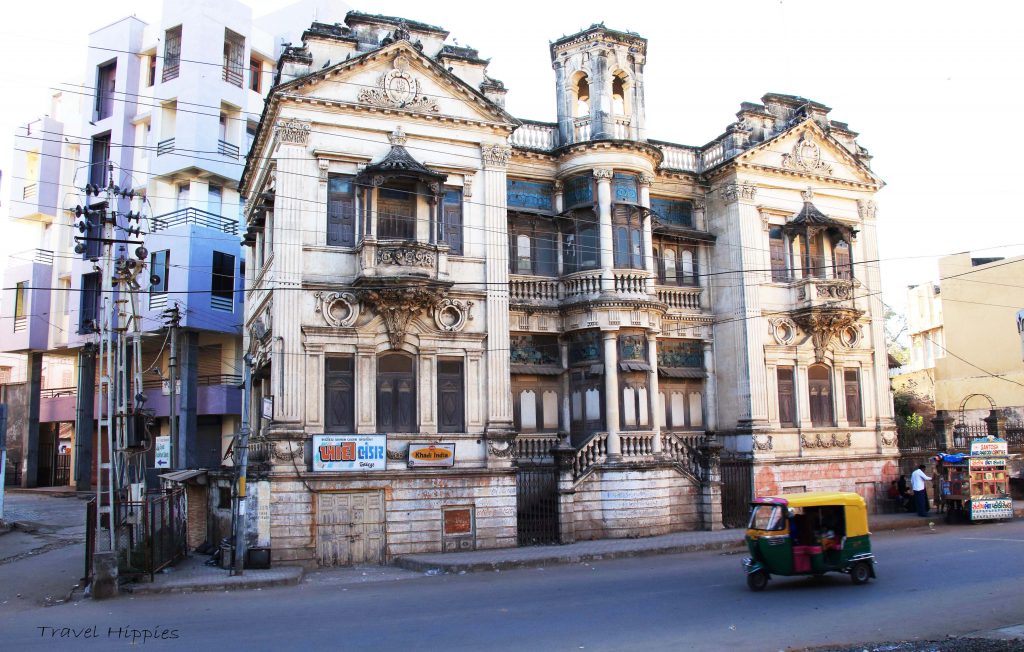
The Town Takes You on a Ride to the Victorian Era
During the British Era, the newly built chimerical mansions of the Bohra Community of Gujarat became the colorful pearls of this ancient town. The Victorian architecture of these houses, which remained untouched even during the current craze of modern architecture, is now the crowning glory of this town.
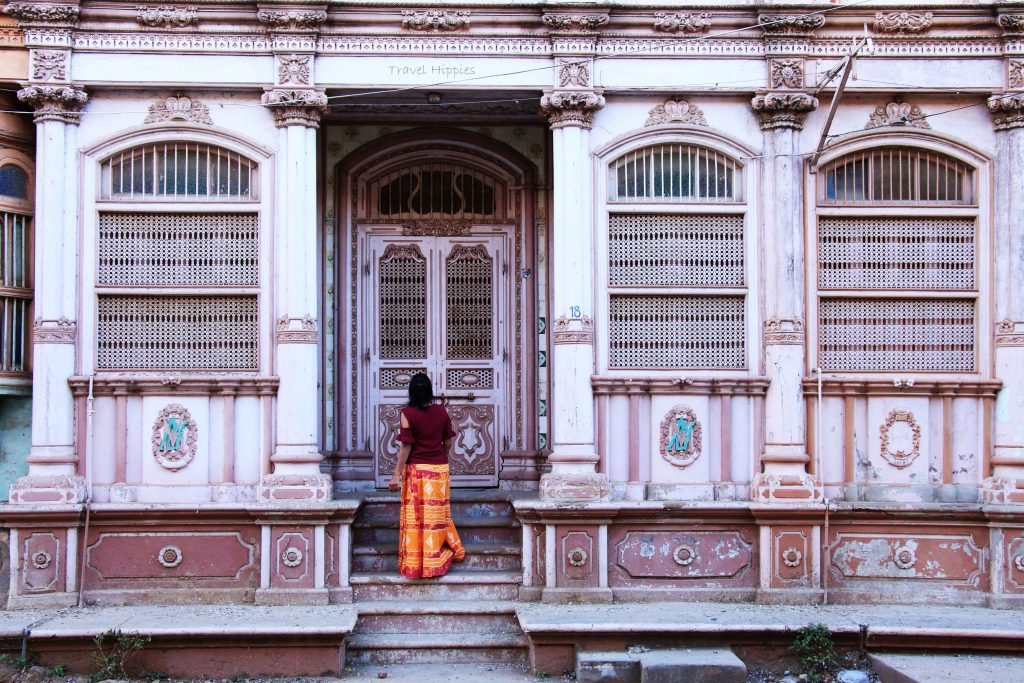
The houses have been kept intact with the efforts of the Bohra Community that has been thriving to preserve the exquisite heritage.
The Wooden Artwork
The wooden doors, interiors, and furniture have also been polished and preserved for more than a hundred years now. If you would finely observe the designs, you would be astonished to find the finely carved wooden arcs and garlands on the rims of the verandah ceiling. Each pillar holding the roof has been molded in an artistic way. When the wooden moldings on each pillar take a curvy move forming a buckle shape, it can deceive you to believe it to be a real creeper.
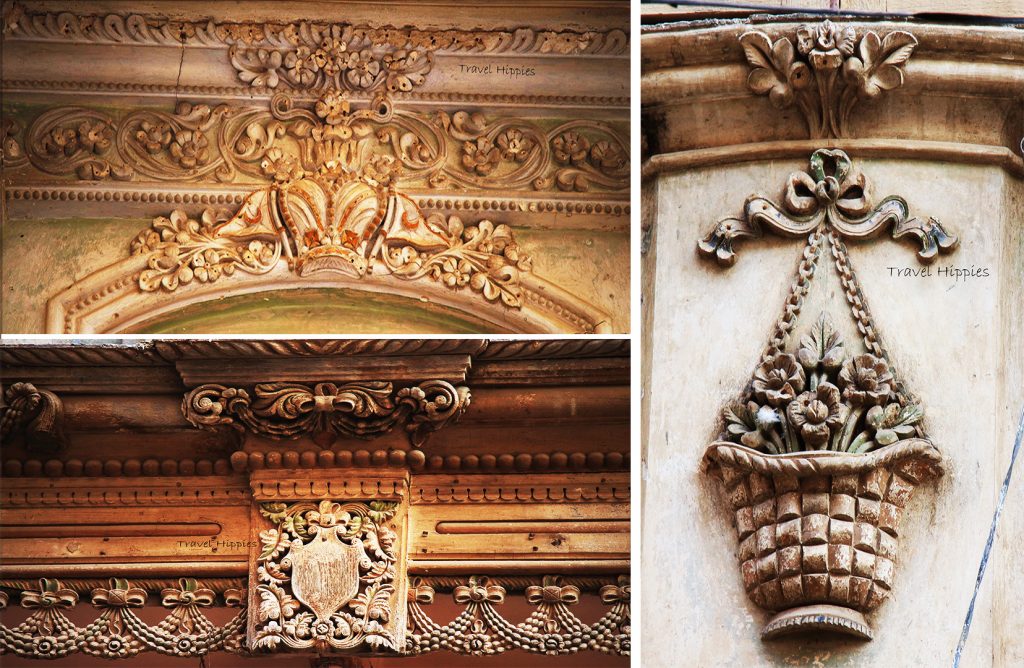
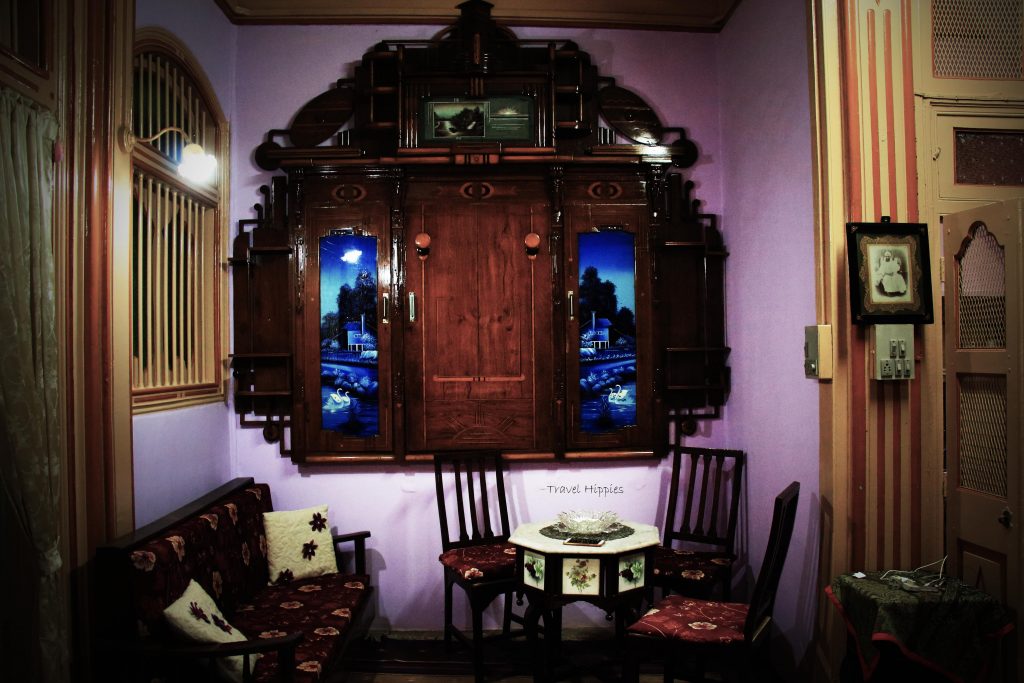
The flowers and the creepers are the main designs on almost every verandah. On the other hand, the banisters in the houses have been given aesthetically beautiful geometric designs. Most of the houses have preserved the furniture of the bygone era. The polished cupboards with shining mirrors seem to be custom-made by a carpenter. The painted glasses stand out among the brightly polished wooden doors and cupboards. Another ancient possession that the Bohris have, are the stams which can be found in all the houses. They are used to store the laundry.
The Adroit Monograms
Each house, just like the old European houses, has a monogram representing the initials of the owner. The initials have been fabricated in the finest manner; it has the charm to tantalize the aesthetic senses of the spectators. “We are Chashmawalas,” said an aunt who saw me decoding their monogram that had the letters C, M, and S. And then she took my short class on General Knowledge about their area. Each house had a unique monogram and the best of the monograms is also a matter of bragging for the Bohris.
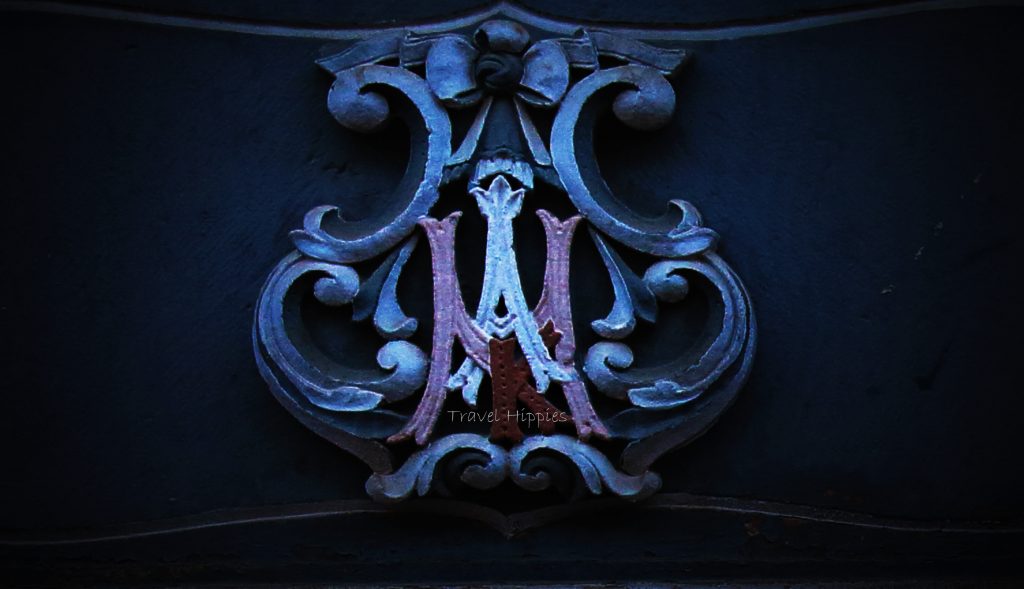
The Whimsical Extravaganza of Colours
I had seen a few random pictures of the colorful houses on the streets and was eager to find that particular street. The moment I entered the Vohrwad area, I was awestruck to see the striking architecture in every lane I entered. The lanes looked like a train of color boxes. The Vohrwad houses appear as if they have just dived into the color palettes of a painter.
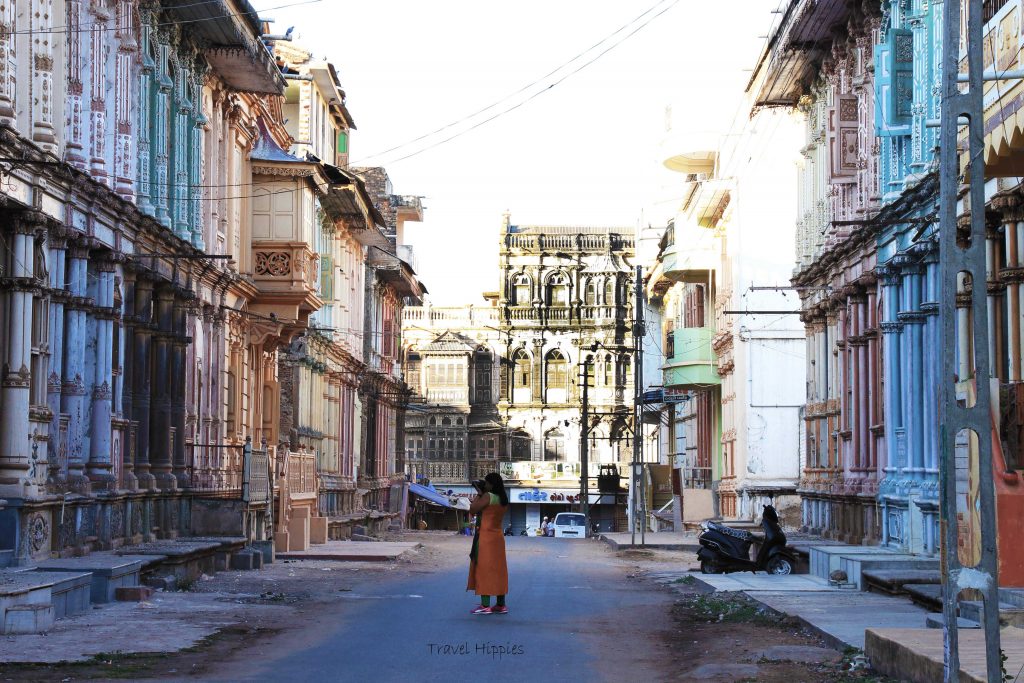
The colors are not so bright as that of the Portuguese houses of Goa but mild and soothing that is pleasing to eyes.
While the vibrant houses looked stunning, most of them were locked and abandoned with broken windows and dilapidated condition.
“Most of the family members have shifted to South India or out of India. Most of our kids visit this hometown of theirs as a museum. They take a stroll, are in awe with the creation but the bustling cities deceive their minds to keep them away from their ancestral roots,” an old Bohri man who was on his short visit to his home in Sidhpur, poured his heart out as he saw us taking interest in their preserved architectural treasure.
The Grand Mansion with 365 Windows
The abandonment of the houses hasn’t affected their vintage beauty. The biggest house in the city stands like the brightest white pearl of the town. All the 365 windows of the house reflecting the sparking sunrays, give it a look of a haunted villa. And the black and white shades of the house add to its haunted look.
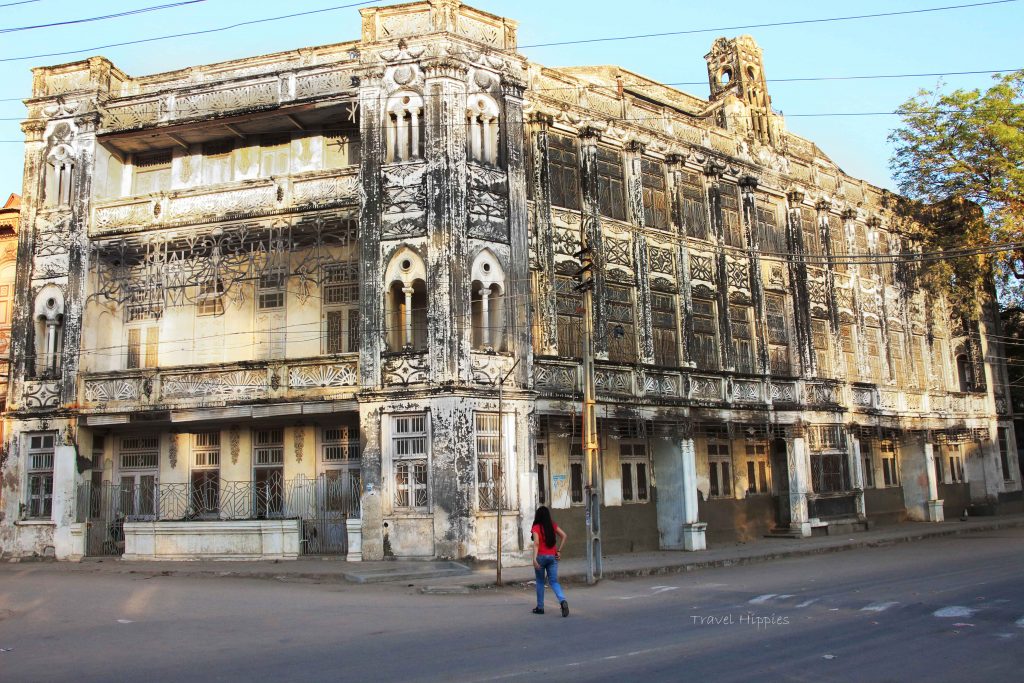
As the darkness wrapped this white beauty, its mysterious appearance made us more curious. “Could you observe anything mysterious about it?” a stranger approached us with this strange question. Being baffled by his sudden approached, we just nodded. He went on to explain to us about the bungalow’s randomly illuminating lights at night. He also showed us a few pictures for the proof that every night a random room’s light will turn on automatically and even the movement can be observed.
We didn’t know whether it was some technology used in deceiving the burglars about the presence of someone in the house or it was really haunted!
Rudra Mahalaya, A Poetry in Ruins
The suspicious thoughts lingered for a while in our minds initiating a debate till we drove to Rudra Mahalay. The sight of the ruins left us speechless in a real sense. It is an ancient Indian ruin singing the saga of its boisterous past. The temple of Shiva that was built during the reign of Raja Jaysinh in 1140 AD was destroyed during the invasions of the Sultans. The ornamental carving of Rudra Mahal resembles the intricate carving of Modhera Temple and Rani ki Vav of Patan.
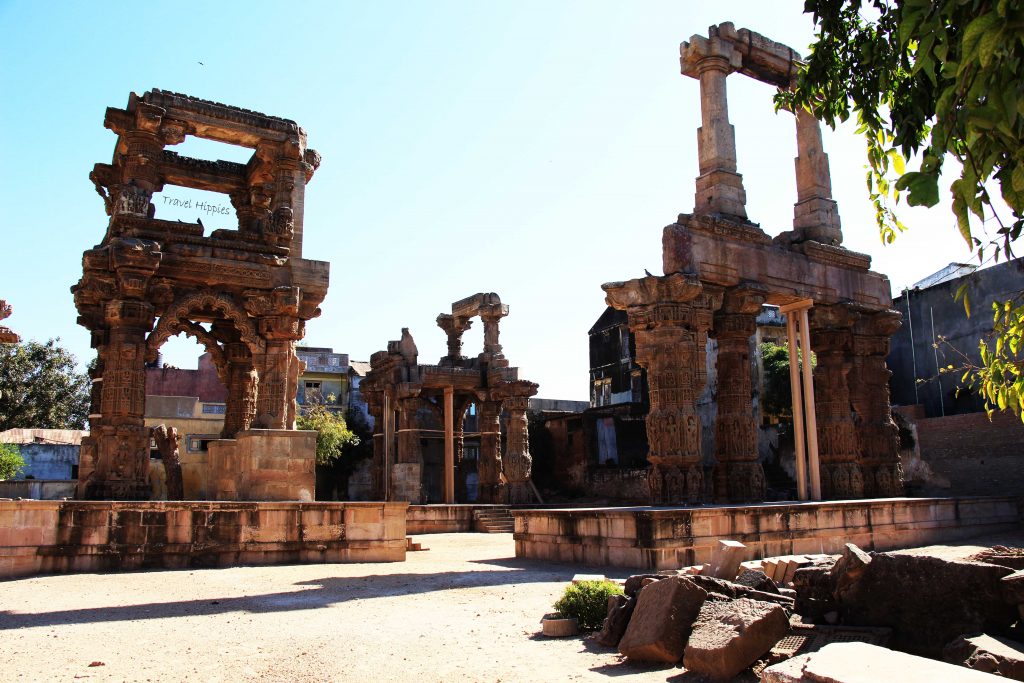
The Muslim style of architecture was a later addition when the temple’s main idols were vandalized and it was converted into a mosque. The walls showcase the finely carved images of Shiva’s tandav poses and a few carving of Shiva Family.
Unfortunately, the brilliant architecture has fallen prey to the Hindu-Muslim conflicts and the temple has been closed for the tourists. However, you can enjoy it from outside and can also move in to pray in the temple.
Once upon a time, the temple had more than 1600 ornamented pillars, giant entrances, and enormous mandap. I could imagine the grand temple of Somnath while stretching my head up, to take an entire glimpse of the huge pillars.
While passing through the narrow winding lanes of the town, no one could have imagined a ruined gem nestled in its interiors. The giant gate was the first thing that lured me to just run through it in slow-motion. (Yea, I love drama 😉 )
The mythological stories of its Bindu Sarovar, Swayambhu Shiva Temple, and Ahilwad Fort make this town a divine Hindu pilgrim too. It tempted me to dig more of its historic jewel, but a day-long time didn’t permit me to relish its historic charm.
With a tacit promise to return to this town, perhaps to make a documentary on this colorful discovery in the historic heartland of Gujarat, we moved on towards Mt. Abu.
Would you really want to see a short video highlighting alluring attractions of Sidhpur? If yes.. then it is coming soon….
Read about a few European destinations…
But before that.. Read about my Road Trip to North Gujarat
Travel Tips
- Direct buses run from Ahmedabad to Sidhpur. If you are coming from Rajasthan, Sidhpur falls on the way to Ahmedabad. Trains can be boarded from Ahmedabad, Vadodara or Surat.
- The locals are too friendly and would be ready to share the facts with you.
- You need at least one full day to explore the place, and if you are in hurry even 3-4 hours are fine.
- Summers would be a perfect time if you wish to meet and talk to the people of Bohri community or else winter is always a good time to explore Gujarat.
- The Bohris are a little reserved, so please have the courtesy to take their permission before clicking them or entering their house.
Pin it now, Read it Later
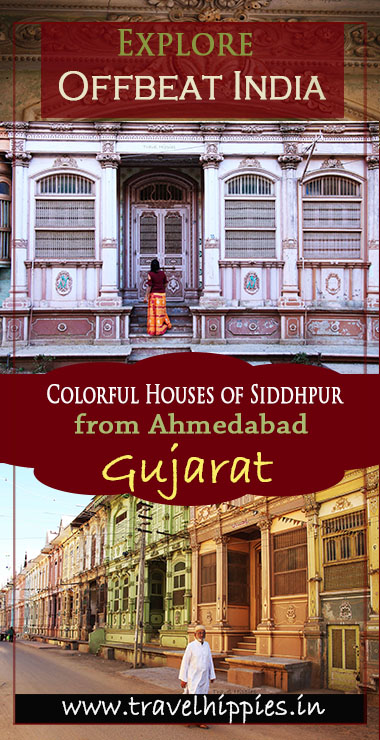

looks like European era place.Love the all captures and its hidden gem in gujarat which not visited by so many people
These are really very amazing photographs, I love your post too and as I have said earlier you are my true motivation. Keep sharing posts like these.
I was not aware of this place until I came across your article. The place is really beautiful. You have written the history very well.